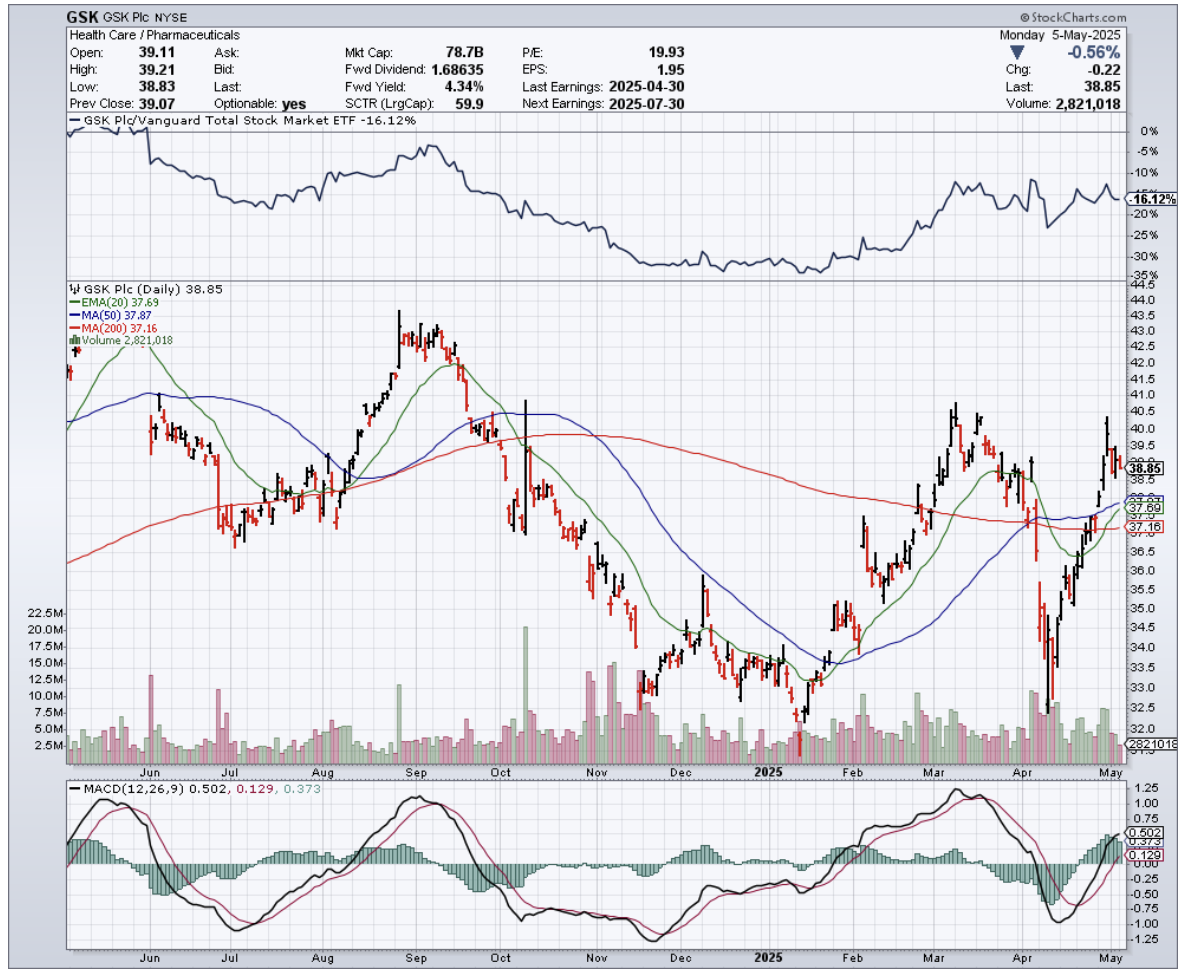An Old, Boring Dog With New Tricks
GSK (GSK) isn’t the name that makes your inbox light up or your broker call in a frenzy. No breaking news banner, no meme-stock frenzy. Just a 15% YTD climb while the rest of the healthcare sector stayed in bed.
It’s the kind of move that doesn’t come with fanfare — but it does make you sit up and ask, wait a minute, what’s going on here?
I was at a biotech conference in Basel once, back when I was helping Swiss Bank sort out its Japanese equity derivatives book. Sitting across from me was a pharma strategist with a pension for skepticism and a wine list habit to match. We were trading war stories about the market’s favorite pastime: chasing biotech rocket ships.
He shook his head and said, "The flash fades. The cash sticks." I laughed, nodded, and promptly forgot about it. But seeing GSK quietly tack on 15% YTD while the rest of the healthcare sector has been napping? That line just came roaring back.
That stuck with me. GSK — the British pharma mainstay formerly known as GlaxoSmithKline — isn’t anyone’s idea of a moonshot. No one’s quitting their day job because of a GSK short squeeze. But what it lacks in fireworks, it makes up for in fundamentals, and frankly, that’s more useful in a market like this one.
Let’s get right into it: Q1 2025 numbers just dropped, and they did not disappoint. Revenue was up 4% year-over-year, and earnings per share beat analyst expectations by a comfortable 15.6%. Not the kind of thing that gets retail investors frothing, but real, tangible outperformance in a quarter when much of the healthcare sector has been flatlining.
GSK’s guidance for the year calls for 3–5% revenue growth and 6–8% EPS growth. These aren't blockbuster figures, but they’re dependable. And in a year where the S&P 500 has had more mood swings than a caffeinated options trader, boring might just be beautiful.
Now let’s talk valuation. GSK’s forward non-GAAP price-to-earnings ratio is currently sitting at 8.8x. That’s well below its five-year average of 12.3x, which implies around 40% upside if the market decides to re-rate the stock closer to historical norms.
Even if it doesn’t, that low P/E means you’re not paying up for growth that may or may not materialize. You're buying earnings now, and at a discount.
The dividend doesn’t hurt either. At 4.4%, it’s comfortably above the sector median of 1.6%. And this isn’t a fly-by-night payout either. GSK has shelled out dividends for 23 straight years, with a payout ratio of just 19%.
There’s also the buyback angle. Management has approved $1.33 billion in repurchases for Q2 2025, which is roughly 3.4% of the company’s market cap. That’s not nothing, and it signals a level of confidence from inside the house that’s worth noting.
Of course, it’s not all sunshine and roses. GSK expects its long-term revenue growth to slow post-2026, projecting a CAGR of 3.5% through 2031. That’s down from the 7% they’re targeting through 2026.
Some might see that as a red flag. I see it as realism. Pharma is cyclical. Patent cliffs are real. And growth eventually slows — even in biotech land.
But margins tell another story. GSK’s core operating margin hit 33.7% in Q1, already above their 2026 target of 31%. If that holds, or improves, the impact on profit leverage over the next couple of years could be meaningful.
In plain English: they’re squeezing more out of every pound they earn.
On a longer timeline, the math still works. Assuming steady margins and modest revenue expansion, GSK’s forward P/E could drop to 6.7x by 2031. At that level, it’s almost unreasonably cheap for a company still growing, still paying a dividend, and still buying back its own stock.
In the late 1990s, I was running one of the first global hedge funds with exposure to Japanese equity derivatives — a market that made GSK look like a thrill ride. What I learned back then was that patience, paired with a good entry point, often beats flash and momentum.
GSK right now feels a lot like that. Quietly undervalued. Misunderstood. But building.
No one’s getting rich overnight with this stock. But if you get a dip, it’s worth stepping into. Not for drama. Not for headlines. But for the sort of predictable, well-capitalized earnings stream that keeps the portfolio steady when the rest of the market forgets what a balance sheet looks like.


